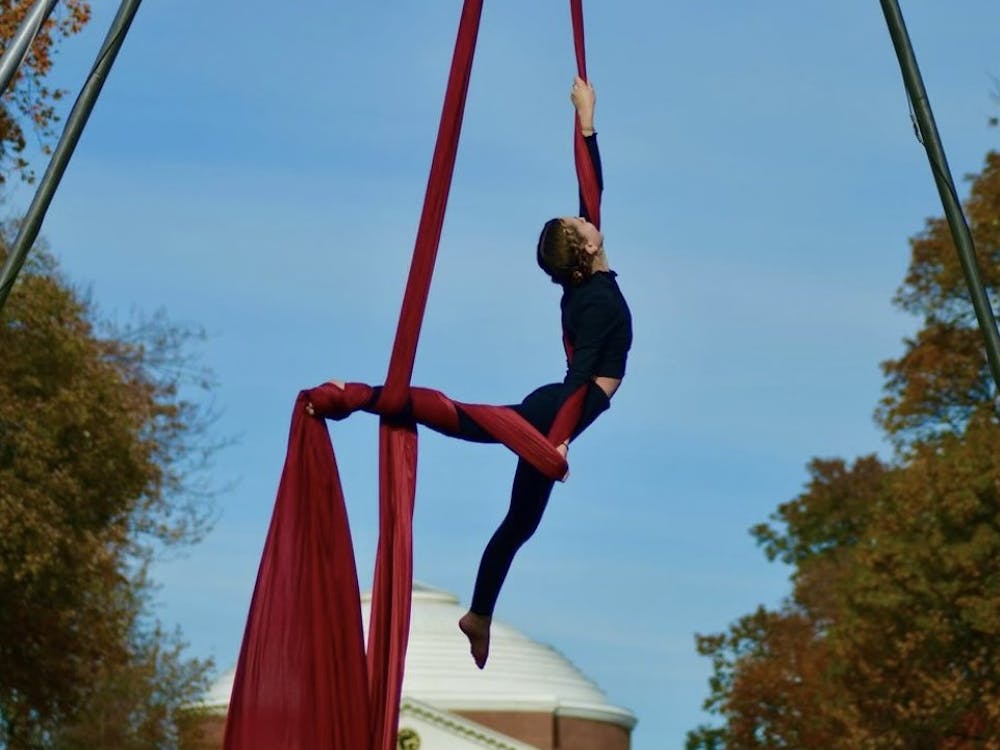“Battle Angel Alita,” known in Japan as “Gunnm,” was a classic cyberpunk manga series published from 1990 to 1995. The series was episodic, chronicling various segments of the titular character Alita’s years-long journey of battle and self-discovery. Endeavoring to adapt part of the vast story into a film is certainly ambitious and necessitates a substantial level of skill — a level that is not on display in the new film “Alita: Battle Angel.”
Released Feb. 14, the story takes place in the year 2563, centuries after human civilization has been dismantled by a cataclysmic war known only as “The Fall.” Refugees of long-forgotten countries have congregated in Iron City, where clinic doctor Dyson Ido (Christoph Waltz) discovers a broken cyborg girl (Rosa Salazar) in a scrapyard who he names Alita. Upon being rebuilt, Alita realizes she remembers nothing of her past, so she endeavors to rediscover who she is and what her place is in this distorted future world with danger and secrets lurking around every corner.
The film’s effort to capture the wide scope of the manga is admirable. Rather than just lengthening one of the series’s story arcs, the film restructures the events of the first two volumes of the nine-volume series to run concurrently rather than sequentially with some new characters and story ideas added to tie them together. Various elements from the other volumes are included but mostly for the sake of world-building. While this approach does allow the film to run through some of the most important events of the early story without losing momentum, it does not pay enough heed to how these changes affect the plot’s pace and emotional progression.
Though linked by common threads, the early story arcs of the manga featured a number of unrelated villains with very different functions. The film uses every single one of these villains and even adds new ones to its roster, flooding the story with disordered conflicts which distract rather than enhance each other. This is especially problematic in the second half of the movie, as the film lacks the means to build tension in service of a definitive final climax and instead merely draws out a series of erratic confrontations with varying degrees of intensity. Without proper build-up, the most exhilarating, tear-jerking and horrifying moments of the film each land with a dull thud.
The script is no help in this regard. Awkward choices in vocabulary, combined with a lack of consideration for context and consistency, make casual dialogue feel needlessly operatic and dramatic dialogue sound limp.
Rosa Salazar tries her best to inject charisma into the leading role, but her effort feels wasted when put next to Keean Johnson as the romantic interest Hugo, who never seems completely comfortable bearing the weight of the film as its emotional core and occasionally seems unclear as to the direction of a given scene.
However, the greatest flaw of “Alita: Battle Angel” is that it either does not care for or does not understand the source material on a thematic level. The world of “Battle Angel Alita” was a cyberpunk dystopia where the poor are dehumanized both literally and metaphorically, replacing more and more of their body parts with prosthetics for better performance in gladiatorial arenas and factories. This sets the stage for the manga’s core thematic question — how does one define humanity and individuality when both have lost their association with the distinct human form?
The film downplays all of these elements — the plight of the poor is much less severe, cyborgs are a tiny minority of the on-screen population and themes questioning the nature of humanity are rarely touched upon. Simply being different from the source material is not necessarily a bad thing, as it is the nature of adaptation to make changes. The problem is that the film — having done away with the original subtext — has not created any new subtexts to lend meaning and still insists on using the original thematic symbols, which become nothing more than empty references. This is most apparent in the aspect of the film that will prove most baffling for casual viewers — Alita’s fully animated face.
As part of its exploration of human nature, Battle Angel Alita developed a visual code that distinguished characters’ inner natures by the appearance of their eyes. The more devoid a character was from aspects of humanity like empathy and loyalty, the less human their eyes became — either due to prosthetic replacement or the use of eyewear.
Alita, on the other hand, despite being a full-body cyborg, is the last bastion of human passion and honor, so she was drawn with very large and detailed eyes. The film tries to replicate this detail through the use of impressive yet uncanny motion capture technology and animation that enlarges Rosa Salazar’s eyes. However, no visual code is established — every other character’s eyes are extremely visibly human. Hence, Alita’s doll-like facial features have no thematic justification and are merely an unnerving distraction for the film’s whole runtime.
“Alita: Battle Angel” is filled to the brim with technical and thematic issues, but truthfully, most of these will only matter to people who care enough to look. As an action film, “Alita: Battle Angel” is visually stimulating and functional enough to kill two hours for any person looking for something generic and unchallenging. But for anyone truly intrigued, the film is a disappointment — an adaptation with no interest in anything that made the source material meaningful, unique or exciting.





